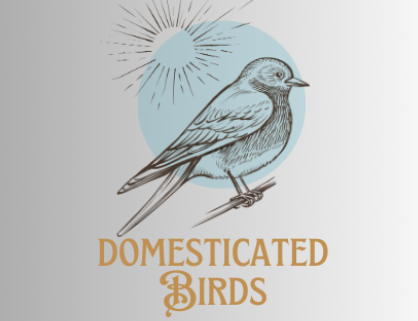Owning a talking parakeet can be an incredibly rewarding experience. Imagine the delight of hearing your feathered friend mimic your words or whistle a tune. Speech training the Indian ringneck parakeet opens up a world of possibilities for communication and bonding with your Indian Ringneck Parakeet. In this comprehensive guide, we’ll explore the joys and benefits of speech training, accompanied by personal testimonials and expert advice.
Getting Started with Speech Training the Indian Ringneck Parakeet
Embarking on the journey of the Indian Ringneck Parakeet talking takes deliberate steps and focused attention. In this section, we’ll delve into the specific actions you can take to initiate the speech training process effectively, ensuring a strong foundation for communication with your feathered companion.
Selecting a Parakeet with Speech Potential
When choosing an Indian Ringneck Parakeet for speech training, look for indications of vocalization and curiosity. opt for a young parakeet, preferably around 3 to 6 months old, as they are more receptive to learning new sounds and words. Observing the behavior of potential parakeets at the breeder or pet store can give you insights into their communication potential.
Establishing Bonding from the Start
Building a strong bond with your Indian Ringneck Parakeet from the beginning is essential for trust and cooperation during training. Spend quality time with your parakeet, engaging in gentle interactions and offering treats to foster a positive association. Use soft, reassuring tones and avoid sudden movements to create a calm and comfortable environment for your feathered friend.

Understanding Parakeet Vocalizations
Differentiating Male and Female Vocalizations
Indian Ringneck Parakeets exhibit gender-specific vocalizations, with males typically displaying more extensive vocabularies and clearer speech compared to females. Male parakeets often excel in mimicking human words and sounds with greater accuracy, while females may exhibit softer or less distinct vocalizations. Understanding these differences allows you to tailor your training approach to suit your parakeet’s unique capabilities.
Examples of Parakeet Vocalizations
Parakeets are adept at producing a diverse range of vocalizations, including chirps, squawks, whistles, and mimicry of household sounds. These vocalizations serve various purposes, such as communication, expression of emotions, and social interaction. By familiarizing yourself with the different types of vocalizations your parakeet produces, you can identify patterns and cues that indicate readiness for speech training.
Demonstrating the Potential for Speech Mimicry
Indian Ringneck Parakeets possess remarkable mimicry abilities, allowing them to replicate human words and phrases with practice and patience. By exposing your parakeet to spoken language and providing opportunities for imitation, you can encourage the development of speech skills. Start with simple words and phrases, gradually increasing complexity as your parakeet becomes more proficient. Consistent reinforcement and positive feedback are key to nurturing your parakeet’s speech mimicry talents.

Speech training The Indian ringneck parakeet:
Conventional Techniques (Known by Everyone)
Introduction to Simple Words and Phrases
Start speech training the Indian Ringneck Parakeet with basic vocabulary by introducing simple words and phrases in a consistent manner. Begin with common words like “treat,” “birdie,” or “play.” During training sessions, repeat these words clearly and slowly, ensuring your parakeet can easily hear and understand.
For example, when offering a treat, say “treat” aloud, emphasizing the word’s pronunciation. Repeat this process regularly to reinforce word association and encourage vocalization.
Importance of Repetition and Consistency
Reinforce learning through repetition and consistency in your speech training sessions. Repeat words and phrases multiple times during each session, maintaining a steady pace and tone.
For instance, if teaching the word “play,” repeat it several times while engaging your parakeet in playful activities. Consistent repetition helps solidify word recognition and encourages your parakeet to mimic the sounds they hear. Be patient and persistent in your approach, as mastering new words takes time and practice.
Using Treats as Motivation and Rewards
Utilize treats as a powerful incentive for your parakeet during speech training the Indian ringneck parakeet. Offer small, desirable treats as rewards for successful vocalizations. For example, when your parakeet correctly repeats the word “treat,” immediately provide a tasty treat along with praise and affection. Make the association between vocalization and reward clear and consistent to reinforce desired behaviors. Over time, your parakeet will associate speaking with positive outcomes, motivating continued participation in training sessions.

Innovative Training Techniques
Interactive Word Games
Engage your parakeet in fun and stimulating word games, such as mimicry contests or “Simon says” sessions. Sit facing your parakeet and say simple words or phrases, such as “hello” or “good bird,” encouraging them to repeat after you. Use a cheerful tone and offer treats as rewards for successful mimicry. Repeat the game regularly to reinforce learning and promote vocalization.
Mirror Training
Place a small, bird-safe mirror near your parakeet’s cage to encourage vocalization and mimicry. Introduce the mirror gradually, positioning it within view of your parakeet without causing them distress. As your parakeet becomes curious, they may approach the mirror and begin vocalizing or interacting with their reflection.
Reward positive interactions with treats and praise, ensuring that the mirror remains a source of enrichment and not a source of stress.
Note: When using a mirror for speech training the Indian ringneck parakeet, opt for a small, bird-safe mirror specifically designed for avian use. Avoid using large or sharp-edged mirrors, as they may pose a threat to your parakeet’s safety. Improper use of mirrors can lead to stress, confusion, or territorial behavior.
Sing-along Sessions
When engaging in sing-along sessions with your parakeet, choose songs with simple melodies and clear rhythms that are conducive to mimicry. opt for cheerful tunes with repetitive phrases, such as nursery rhymes or popular children’s songs.
Avoid songs with complex melodies or lyrics, as they may be challenging for your parakeet to imitate. Additionally, steer clear of songs with loud or jarring sounds that could startle or stress your bird. Instead, select gentle and soothing melodies that promote a calm and positive atmosphere during sing-along sessions.
Audio Recordings
Play recordings of human speech or household sounds to expose your parakeet to a variety of vocalizations. Use a speaker or device with adjustable volume to control the intensity of the sound. Start with recordings of simple words or phrases, gradually increasing the complexity as your parakeet becomes more adept at mimicry.
Play the recordings during quiet moments or while you’re away from home, providing your parakeet with opportunities to practice vocalization in different contexts.

Environmental Enrichment
Create a stimulating environment for your parakeet by incorporating toys, puzzles, and natural sounds. Hang colorful toys and interactive puzzles in and around your parakeet’s cage, encouraging exploration and play. Place a small fountain or bird-safe waterfall nearby to introduce soothing sounds of nature. Rotate toys regularly to keep your parakeet engaged and stimulated, promoting vocalization and cognitive development.
Target Training
Teach your parakeet to vocalize on cue by using target training. Hold a small target stick or object near your parakeet and encourage them to touch it with their beak or foot. Use a clicker or verbal cue, such as “speak,” to prompt vocalization in response to the target. Reward successful attempts with treats and praise, gradually increasing the distance between the target and your parakeet to reinforce vocalization. Practice target training regularly to strengthen your parakeet’s communication skills and deepen your bond with them.
Advanced Training Techniques
Phrase Building Blocks
Break down complex phrases into smaller components to facilitate learning for your parakeet. For instance, if you want your parakeet to say, “good morning,” start by teaching them to say “excellent” and “daybreak” separately. Once they’ve mastered each word individually, gradually combine them to form the complete phrase. Use repetition and positive reinforcement to solidify each building block, gradually increasing the difficulty as your parakeet progresses.
Voice Recognition
Employ voice recognition software or apps tailored for speech training with parakeets. These tools analyze your parakeet’s vocalizations and provide feedback on accuracy and clarity. Initiate by recording simple words or phrases and playing them back to your parakeet through the software. As your parakeet learns to mimic the recordings accurately, the software recognizes their progress and adjusts the speech training the ringneck parakeet accordingly.
Whisper Training
Practice murmuring words and phrases to your parakeet to encourage them to mimic softer tones. Sit near your parakeet’s cage and speak softly, using gentle, hushed tones. Repeat straightforward words or phrases, such as “greetings” or “affectionate,” in a whisper, encouraging your parakeet to imitate the subtle sounds. Whisper training aids your parakeet in developing vocal variety and clarity, preparing them for more advanced speech training.
Storytelling Sessions
Engage your parakeet in storytelling sessions by narrating simple tales or anecdotes. Select stories with repetitive phrases or vibrant imagery that captivate your parakeet’s attention. Sit near your parakeet’s cage and employ expressive gestures and animated voices to bring the narrative to life. Encourage your parakeet to vocalize in response to keywords or phrases, rewarding their participation with treats and praise. Storytelling sessions foster language development and inspire creative expression in your parakeet.

Interactive Apps
Explore interactive applications specifically designed for speech training the Indian ringneck parakeet and enrichment for parakeets. These apps offer engaging activities and games tailored to your parakeet’s learning needs, such as mimicry challenges or vocabulary quizzes. Install the application on a tablet or smartphone and position it near your parakeet’s cage. Encourage your parakeet to interact with the application by tapping or vocalizing in response to prompts. Interactive apps provide additional opportunities for practice and reinforcement in a fun and interactive format.
Virtual Training Sessions
Engage in virtual training sessions or webinars led by experienced trainers specializing in speech training for parakeets. These online resources offer valuable guidance and support, covering advanced techniques and troubleshooting common challenges. Participate in virtual training sessions from the comfort of your home, interacting with other parakeet owners and sharing tips and strategies for success. Virtual training sessions offer personalized instruction and expert advice to help elevate your parakeet’s speech training journey.
Overcoming Challenges in speech Training the Indian ringneck parakeet
Dealing with Distractions
To address distractions during training sessions, designate a quiet and secluded area for your parakeet’s training sessions. Minimize external stimuli such as loud noises or sudden movements that may divert your parakeet’s attention. Additionally, consider covering nearby windows or reducing ambient noise to create a calm and focused environment for training.

Practical Example: Set up a training station in a room away from noisy appliances or areas with high foot traffic. Close the door to minimize disruptions and use soft, soothing music to create a serene atmosphere conducive to learning.
Motivating Stubborn Parakeets:
Tailor your training approach to suit your parakeet’s individual personality and preferences. Experiment with different training techniques, rewards, and stimuli to find what motivates and engages your parakeet. Some parakeets may respond better to verbal praise, while others may be more motivated by food rewards or interactive toys.
Practical Example: If your parakeet shows little interest in traditional training methods, try incorporating their favorite treats or toys into training sessions to increase motivation. Use positive reinforcement to reward even small attempts at vocalization, gradually building confidence and enthusiasm for training.
Addressing Lack of Interest:
If your parakeet loses interest during training, take a break and reassess your approach. Keep training sessions short and engaging, focusing on one skill at a time to prevent boredom or frustration. Introduce variety into your training routine by incorporating different activities or stimuli to maintain your parakeet’s interest and enthusiasm.
Practical Example: If your parakeet seems disinterested in vocalization training, switch to a different activity such as target training or interactive play. Keep training sessions upbeat and dynamic, alternating between different exercises to keep your parakeet engaged and motivated.
Managing Frustration
Stay patient and positive during training sessions, even when faced with setbacks or challenges. Approach training with a calm and encouraging demeanor, avoiding frustration or impatience. Break down training tasks into smaller, manageable steps and celebrate each small achievement to maintain a positive learning experience for your parakeet.
Practical Example: If your parakeet struggles to mimic a particular word or phrase, break it down into smaller components and practice each part separately. Offer plenty of encouragement and rewards for effort, focusing on progress rather than perfection to keep morale high.
Seeking Professional Guidance
If you encounter difficulties or need additional support, consider seeking guidance from a qualified avian trainer or behaviorist. Professional assistance can offer tailored solutions and expert advice for overcoming training obstacles. Attend workshops or training seminars led by experienced trainers to gain valuable insights and techniques for successful speech training.
Pitfalls to Avoid
Forced Speech
Avoid pressuring or forcing your parakeet to vocalize words or phrases. Forcing speech can lead to stress and anxiety in your parakeet, hindering their willingness to engage in training.
Instead, focus on creating a positive and supportive environment that encourages natural vocalization and communication.
Potential Consequence: Forcing speech may cause your parakeet to become fearful or resistant, leading to behavioral issues such as aggression or vocalization avoidance.
Over time, this can damage the trust and bond between you and your parakeet, making speech training more challenging.
Punishment
Refrain from using punishment or negative reinforcement during training sessions. Punishment can create fear and confusion in your parakeet, undermining their confidence and willingness to participate in training. Instead, emphasize positive reinforcement and rewards to encourage desired behaviors and foster a trusting relationship.
Potential Consequence: Punishment can erode your parakeet’s trust in you as their caregiver and trainer, leading to avoidance behaviors or even aggression. Additionally, punishment may inhibit your parakeet’s natural vocalization and communication, hindering their progress in speech training.
Overwhelming Stimuli
Be mindful of overwhelming your parakeet with too much stimuli or information during training. Introduce new concepts and techniques gradually, allowing your parakeet time to adjust and assimilate. Overwhelming stimuli can cause stress and confusion, impeding your parakeet’s ability to learn and retain new skills.
Potential Consequence: Overwhelming stimuli can trigger anxiety or fear responses in your parakeet, resulting in decreased confidence and motivation for training. Your parakeet may become hesitant or reluctant to engage in training sessions, hindering progress and causing frustration for both you and your pet.
Ignoring Body Language
Pay attention to your parakeet’s body language and vocalizations during training sessions. Ignoring subtle cues such as fluffed feathers, beak grinding, or vocal protests can indicate discomfort or stress. Responding to your parakeet’s body language helps create a supportive and respectful training environment.
Potential Consequence: Ignoring your parakeet’s body language can lead to increased stress and anxiety, negatively impacting their overall well-being and training progress. Your parakeet may become more reluctant to participate in training sessions or exhibit signs of distress, undermining their ability to learn and communicate effectively.
Skipping Bonding Time
Avoid neglecting the importance of bonding time with your parakeet outside of training sessions. Building a strong and trusting relationship through regular interaction and quality time together is essential for successful training. Bonding activities such as gentle handling, grooming, and shared play strengthen the bond between you and your parakeet, fostering cooperation and mutual respect.
Potential Consequence: Skipping bonding time can weaken the bond between you and your parakeet, making it more difficult to establish trust and communication during training. Your parakeet may become less responsive to training cues or less motivated to engage in learning activities, hindering progress and causing frustration for both you and your pet.
Personal testimonials from parakeet owners
Testimonial – Sarah Bloomfield:
“Training my parakeet, Sunshine, to talk has been an incredibly rewarding experience. From the moment we brought her home, she showed a natural curiosity for speech mimicry. With consistent training using interactive word games and storytelling sessions, Sunshine now delights us with her repertoire of phrases and even sings along to our favorite songs!
Advice:
My advice to fellow parakeet owners is to be patient and celebrate every small achievement along the way.
Thing to avoid:
one thing to avoid is overexerting your parakeet with lengthy training sessions, as it can lead to frustration and burnout.”
Testimonial – Max Kingston:
“I never imagined my parakeet, Bluebell, would become such a chatterbox! With innovative techniques like voice recognition and whisper training, Bluebell has surprised us with her ability to mimic not only our voices but also those of our friends and neighbors.
Advice:
My advice to other parakeet enthusiasts is to embrace creativity and experiment with different training methods to discover what resonates best with your bird.
Thing to avoid:
it’s crucial to avoid forcing your parakeet to vocalize if they show signs of stress or reluctance, as it can hinder their progress and damage your bond.”
Testimonial – Leila Sinclair:
“Training my parakeet, Mango, to talk has been a journey filled with joy and laughter. Incorporating interactive apps and multisensory training has kept Mango engaged and eager to learn. His favorite part of training is our outdoor sessions in the park, where he gets to soak in the sights and sounds of nature while practicing his newfound vocabulary.
Advice:
My advice to fellow parakeet owners is to make training sessions enjoyable for both you and your bird by maintaining a positive and relaxed atmosphere.
Thing to avoid:
It’s important to avoid overwhelming your parakeet with too many new words or phrases at once, as it can lead to confusion and frustration.”
Testimonial – Rajesh Patel:
“Teaching my parakeet, Kiwi, to talk has been an enlightening experience. Through customized training plans and virtual training sessions with other parakeet owners, Kiwi has blossomed into a confident and articulate bird.
Advice:
My advice to aspiring parakeet trainers is to stay open-minded and adaptable, as every bird has its own unique personality and learning style.
Thing to avoid:
one thing to avoid is neglecting social interaction with your parakeet in favor of intensive training sessions, as it’s essential for their overall well-being and mental stimulation.”
Testimonial – Isabella Chang:
“Watching my parakeet, Peaches, develop her speech has been truly magical. With the help of storytelling sessions and speech recognition devices, Peaches has mastered a diverse range of phrases and even greets visitors with a cheerful ‘hello!’
Advice:
My advice to fellow parakeet enthusiasts is to prioritize consistency in training while also allowing room for spontaneity and fun.
Thing to avoid:
It’s important to avoid getting discouraged by setbacks or slow progress, as every bird learns at its own pace and perseverance is key to success.”
Tips for Continued Success
Integrating speech training into daily routines:
Incorporate short training sessions into your daily routine to reinforce learning and maintain progress. Consistency is key to building and retaining speech skills.
Celebrating small victories and milestones:
Celebrate each achievement and milestone in your parakeet’s speech training journey. Whether it’s mastering a new word or improving vocal clarity, acknowledge and reward progress.
Enjoying the unique bond with your talking parakeet:
Embrace the special bond formed through speech training and communication. Cherish the moments of connection and shared understanding with your feathered friend.
Conclusion:
In conclusion, speech training the Indian ringneck parakeet offers a rewarding opportunity to connect with your Indian Ringneck Parakeet on a deeper level. Through patience, dedication, and innovative, conventional, and advanced techniques, you can unlock your parakeet’s potential for speech and communication. Remember to celebrate each success, stay patient in the face of challenges, and cherish the unique bond you share with your talking parakeet.
FAQs: Speech training the Indian ringneck parakeet.
Can ringneck parakeets talk?
Yes, Indian Ringneck Parakeets have the ability to mimic human speech, although not all of them will learn to talk. Some individuals may develop a limited vocabulary, while others may become proficient talkers, depending on various factors such as genetics, environment, and training.
Which Indian parrot is best for talking?
Among Indian parrots, the Indian Ringneck Parakeet is often considered one of the best talkers. They have a natural inclination towards mimicking human speech and can develop an extensive vocabulary with consistent training and social interaction.
How do you teach a ringneck parrot to talk?
Teaching a Ringneck Parrot to talk requires patience, consistency, and positive reinforcement. Start with simple words or phrases, repeat them frequently in a calm environment, use treats or rewards to encourage vocalization, engage in interactive activities like word games or singing sessions, and provide social interaction to stimulate vocalization.
Why is my Indian ringneck not talking?
There could be several reasons why your Indian Ringneck Parakeet is not talking:
- Lack of consistent training.
- Lack of social interaction and exposure to human speech.
- Shyness or stress.
- Individual variation in speech ability.
Where to find Indian ringneck parakeet for sale?
Indian Ringneck Parakeets are commonly available for sale at pet stores, avian specialty stores, reputable breeders, online classifieds, and avian rescue organizations. Ensure you choose a reputable seller who prioritizes the health and well-being of their birds.
How does an Indian Ringneck Parakeet’s talking sound?
Indian Ringneck Parakeets have a unique and charming way of mimicking human speech. Their talking sounds can vary from bird to bird but are generally clear, melodic, and sometimes slightly robotic-sounding, adding to their charismatic personalities


Keep this going please, great job! https://Www.waste-ndc.pro/community/profile/tressa79906983/
Стильные заметки по выбору необычных видов на любой день.
Статьи экспертов, события, все новинки и шоу.
https://emurmansk.ru/pub/2024-09-10-demna-gvasaliya-revolyutsioner-mody-i-kreativnyy-provokator/
Модные советы по выбору крутых видов на любой день.
Мнения стилистов, события, все новые коллекции и мероприятия.
https://ekbtoday.ru/news/2024-09-10-demna-gvasaliya-pereosmyslyaya-modu/
Модные советы по созданию превосходных образов на каждый день.
Заметки экспертов, новости, все новые коллекции и шоу.
https://luxe-moda.ru/chic/505-7-luchshih-sumok-guess-dlya-pokupki-v-2024-godu-stil-i-funktsionalnost/